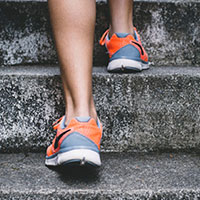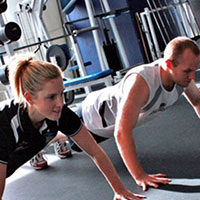Benefits of Exercise
Physical activity may reduce the risk of several types of cancer, including breast, colon and endometrium (lining of the uterus), and it may also lower a person’s risk of other health problems such as heart disease, high blood pressure, diabetes, and osteoporosis (bone thinning). Being active may also help to prevent weight gain and obesity, which can reduce the risk of developing cancers that have been linked to excess body weight.
You can do a mix of moderate and vigorous intensity. Just remember:
2 hours of moderate intensity = 1 hour of vigorous intensity.
Moderate-intensity aerobic activity means you’re working hard enough to raise your heart rate and break a sweat. One way to tell is that you’ll be able to talk, but not sing the words to your favorite song. A person doing vigorous intensity activity cannot say more than a few words without pausing for a breath.
The lower recommended amount of exercise will give you substantial health benefits, and the higher amount recommended will give you even greater health benefits! It’s great to spread your activity out during the week, and you can even break it up into smaller chunks of time during the day.
Avoid inactivity. Any amount of physical activity has health benefits…and exercising more than the recommended amount has even greater health benefits. Talk with your doctor about the type of physical activity that is right for you. (1)
The following Guidelines are just for older adults:
- When older adults cannot do 150 minutes of moderate-intensity aerobic activity a week because of chronic conditions, they should be as physically active as their abilities and conditions allow.
- Older adults should do exercises that maintain or improve balance if they are at risk of falling.
- Older adults should determine their level of effort for physical activity relative to their level of fitness.
- Older adults with chronic conditions should understand whether and how their conditions affect their ability to do regular physical activity safely. (2)
Read More:
Piercy KL, Troiano RP, Ballard RM, et al. The Physical Activity Guidelines for Americans. JAMA.2018;320(19):2020–2028. doi:10.1001/jama.2018.14854







